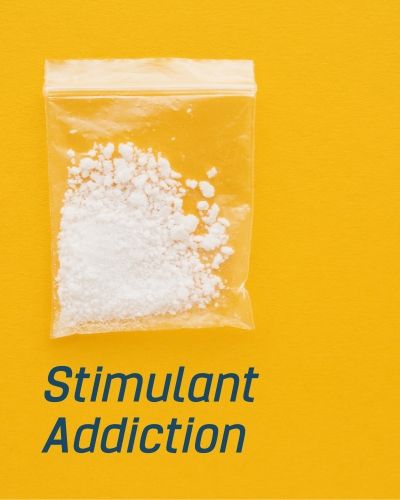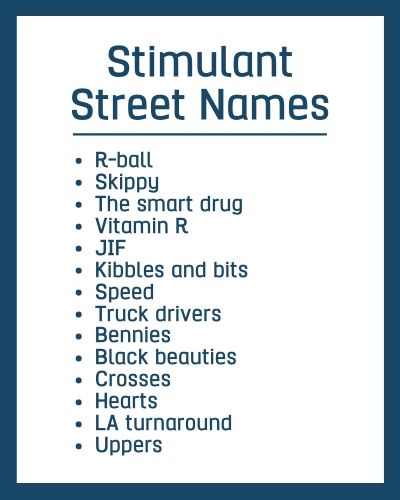“Stimulants” is a term used to describe a class of drugs that increase brain activity when ingested. A common name used for stimulants is “uppers” because they create feelings and sensations of alertness, energy, and even confidence. Providing highly pleasurable short-term effects, stimulant addiction and dependence can develop. Due to the potential long-term effects, stimulant addiction treatment may be needed for those who struggle with abuse.
How Stimulants Affect the Brain
When stimulants are ingested, they initiate the release of dopamine and norepinephrine neurotransmitters in the brain. Larger, stronger doses initiate a greater release of these neurotransmitters. Additionally, certain methods of use are faster acting than others. For instance, intravenous injection is much faster acting than orally consuming a tablet and the effects will come on quicker and stronger. When dopamine is released in the brain, it binds to dopamine receptors, sending signals from the brain to cells throughout the body. The signals tell the cells to act in a way that creates a euphoric effect for the individual. When norepinephrine is released, it signals blood vessels to restrict, blood pressure and heart rate to increase, blood pressure to rise, and breathing to become strained.

Types of Benzodiazepines
Types of Benzodiazepines
Stimulants can be found in various forms including tablets, capsules, powders, and crystals. In a tablet or capsule form, they may be taken orally. However, when abuse, they are more likely to be crushed and snorted, melted and injected, or smoked.
Prescription
- Adderall
- Ritalin
- Concerta
- Dexedrine
Long Term Effects on the Brain
Long term use of stimulants can actually change the anatomy of the brain in an attempt to maintain homeostasis. The nervous system of an individual who has abused stimulants over a long period of time will have less of some receptors in order to adapt to the increase in the neurotransmitters that bind to it. As the brain tries to adapt, the effect of stimulant use becomes more difficult to achieve, and the user increases the dosage in an attempt to get the same effect, or to “chase their high”. As the dosage increases over time, so does the risk of stroke, heart attacks, psychotic episodes, permanent brain damage, and even death.
Signs of Addiction
Identifying stimulant addiction early is ideal. The earlier the addiction is addressed, the greater the likelihood of recovery. Additionally, early intervention can help prevent life-altering consequences. There are a number of signs to consider when determining if an individual is struggling with stimulant addiction and in need of treatment. These include, but are not limited to:
- “Doctor shopping” to get multiple prescriptions with overlapping refill dates
- Going around town to different pharmacies to fill prescriptions
- Finding paraphernalia in their belongings (such as a razor to cut tablets or supplies to melt and inject a substance)
- A lack of interest in activities that they previously enjoyed
- Spending time around a new group of people and avoiding contact with close friends and family
Levels of Care
Stimulant addiction treatment is not one-size-fits-all. Additionally, recovery often requires a continuum of care that starts on the first days of sobriety and may continue for months or years depending on the individual’s needs. There are some standard levels of care recommended for those experiencing addiction and dependence on any number of stimulants:
Due to the potential for physical and psychological withdrawal symptoms, a medical detox program is recommended as the first step for individuals who struggle with stimulant addiction. Individuals will typically spend a 1-2 week time period in an inpatient setting with 24/7 monitoring and access to medication, as well as alternative therapies.
After completing detox, some who are getting treatment for stimulant addiction will transition into PHP. While in a PHP program, the individual will live in a halfway house or sober community while spending the majority of their days attending additional treatment programming. PHP is a good option for individuals who are battling mental health disorders or individuals who have unsuccessfully tried lower levels of care before.
Admission to IOP may occur immediately after detox or following being discharged from a PHP program. Clients may live at home or in a sober community while receiving this level of care for stimulant addiction treatment. Treatment programming may take up about 15-20 hours per week.
Outpatient treatment is typically only about 5 hours of programming per week. Programming typically includes individual and group therapy. Outpatient treatment provides long-term support while those overcoming stimulant addiction work to resume their normal day to day life.

Starting Treatment for Stimulant Addiction
Stimulant Addiction Treatment is no more than a phone call away. Our admissions specialists will conduct a short assessment to determine the exact needs of the patient, refer a particular program, help with verifying the insurance policy or discuss other payment options, and even help arrange travel to the recommended facility. Get started on the road to recovery with Level Up Lake Worth.